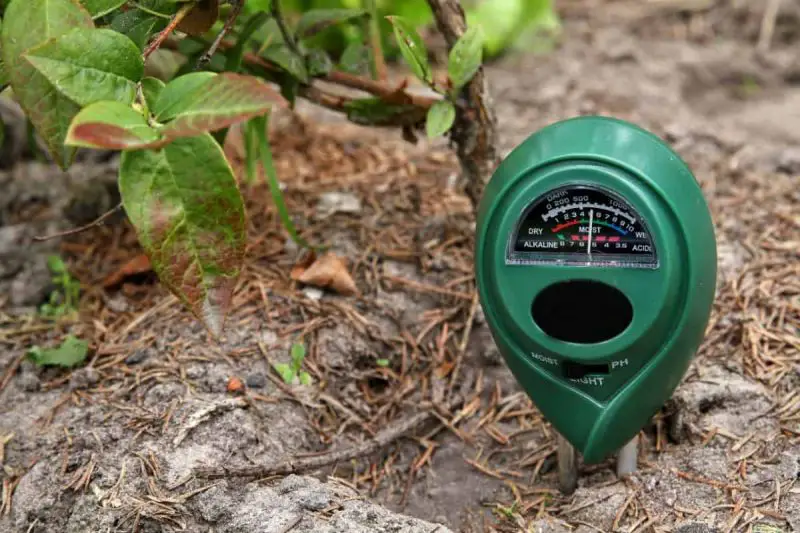Gardening success often depends on proper watering, and this is where a reliable soil moisture meter becomes indispensable. In 2025, gardeners have access to highly advanced tools that make monitoring soil moisture easier than ever. Whether you are growing indoor houseplants, maintaining a vegetable garden, or caring for outdoor trees, choosing the right soil moisture meter ensures that your plants thrive.
This detailed review explores the five best soil moisture meters available in 2025. Each product is evaluated based on accuracy, ease of use, durability, and extra features. By the end, you will know which device best suits your gardening needs.
Table of Contents
Why a Soil Moisture Meter is Essential for Gardeners

Understanding the Role of Soil Moisture in Plant Health
Water is crucial for plant growth, but both overwatering and underwatering can harm roots. A soil moisture meter gives precise readings, helping gardeners water plants only when needed. This ensures healthy root development, reduces the risk of fungal infections, and conserves water.
Advantages of Using a Soil Moisture Meter
A good soil moisture meter saves time by removing guesswork. Instead of relying on touch or visual inspection, you can measure exactly how wet or dry the soil is. Many modern meters even include pH and temperature sensors, offering complete insights into soil conditions.
Factors to Consider When Choosing a Soil Moisture Meter
Accuracy and Sensor Type
The best meters have sensitive probes that detect moisture accurately at different soil depths. Some models use analog needle gauges, while others feature digital displays for more precise readings.
Ease of Use and Power Source
Analog meters are simple and require no batteries, whereas digital ones may need batteries but offer clearer readings and data storage.
Additional Features
Some meters are multifunctional, measuring soil pH, temperature, and even sunlight intensity. For serious gardeners, these features are highly beneficial.
Durability and Price
Investing in a sturdy meter is important, especially for outdoor use. Stainless steel probes and waterproof designs generally last longer.
The Top 5 Best Soil Moisture Meters 2025 (Full Reviews)
Below are detailed reviews of the five top-performing soil moisture meters in 2025. Each is examined for performance, features, and user suitability.
1. XLUX Soil Moisture Meter – The Reliable Analog Choice
The XLUX Soil Moisture Meter remains a favorite in 2025 due to its simple design and consistent accuracy. This analog meter requires no batteries, making it ideal for beginners and casual gardeners. With its large, clear dial, it is easy to read, even in bright sunlight.
Gardeners appreciate its sturdy single-probe design, which is less likely to damage plant roots. It works well for houseplants, herbs, and small garden plots. However, it only measures moisture and not pH or temperature, limiting its versatility.
2. Sonkir 3-in-1 Soil pH Meter – Best Multifunctional Meter
The Sonkir 3-in-1 Soil pH Meter is perfect for gardeners who want more than just moisture readings. Besides measuring soil moisture, it also checks pH levels and sunlight exposure, giving you comprehensive information about your plant’s growing environment.
Its dual-probe design provides accurate readings, though inserting both probes into hard soil can sometimes be difficult. It is battery-free, which is a plus, but the pH readings may require occasional calibration for maximum accuracy.
3. ECOWITT Digital Soil Moisture Sensor – Best for Data Tracking
The ECOWITT Digital Soil Moisture Sensor stands out in 2025 for its ability to connect to smartphones and store historical data. Gardeners who love technology can monitor soil moisture trends over time, making it great for research or serious vegetable gardening.
It provides precise digital readings and alerts when soil becomes too dry or too wet. However, it requires batteries and occasional syncing with the app, which might not appeal to those who prefer a simpler tool.
4. Rapitest Soil Moisture Meter – Durable and Easy to Use
The Rapitest Soil Moisture Meter has been a trusted brand for years, and its 2025 version offers improved durability. Its single-probe analog design is strong enough for outdoor garden use, even in tougher soils.
Gardeners appreciate its ease of use—simply insert the probe, and the needle instantly shows soil moisture levels. Like the XLUX, it measures only moisture, but its rugged build makes it ideal for regular outdoor gardening.
5. Kensizer Soil Tester – Affordable and Beginner-Friendly
The Kensizer Soil Tester is perfect for beginners or those on a budget. It offers a simple analog moisture reading and is lightweight, making it easy to carry around the garden. Though not as durable as Rapitest or XLUX, it performs reliably for indoor plants and light outdoor use.
It does not measure pH or temperature, but its affordability makes it a popular entry-level choice for home gardeners.
Comparison Table: Pros and Cons of the Top 5 Soil Moisture Meters 2025
Soil Moisture Meter |
Pros |
Cons |
|---|---|---|
XLUX Soil Moisture Meter |
Accurate analog reading, no batteries needed, user-friendly |
Measures only moisture, not for deep soil |
Sonkir 3-in-1 pH Meter |
Measures moisture, pH, sunlight; no batteries required |
Probes can be delicate, pH may need calibration |
ECOWITT Digital Sensor |
Tracks data via app, highly accurate digital readings |
Requires batteries and smartphone app |
Rapitest Soil Moisture Meter |
Strong, durable probe, quick reading, great for outdoor use |
No extra features, only moisture detection |
Kensizer Soil Tester |
Affordable, lightweight, easy for beginners |
Less durable, limited to moisture only |
How to Use a Soil Moisture Meter Effectively
Proper Probe Insertion
Always insert the probe gently into the soil to avoid damaging plant roots. Push it to the recommended depth, usually 2–4 inches for houseplants and deeper for garden plants.
Reading and Interpreting Results
Wait a few seconds for the needle or digital display to stabilize before interpreting the results. Dry, moderate, and wet zones are usually marked clearly on analog dials.
Cleaning and Maintenance
After each use, clean the probe with a dry cloth to prevent corrosion. For digital meters, check batteries regularly and store them in a dry place.
Which Soil Moisture Meter Should You Choose in 2025?
If you need a simple, reliable analog meter, choose the XLUX or Rapitest. For tech enthusiasts or serious gardeners, the ECOWITT Digital Sensor is the best choice. If you want all-in-one functionality, the Sonkir 3-in-1 offers moisture, pH, and sunlight readings, while beginners on a budget will love the Kensizer.
FAQs about Soil Moisture Meter
What is a soil moisture meter and how does it work?
A soil moisture meter is a gardening tool designed to measure the water content in soil. It typically has a probe that you insert into the ground, which senses the moisture level and displays it on a gauge or digital screen. This helps gardeners determine when to water plants, preventing overwatering or underwatering.
Why should I use a soil moisture meter in my garden?
Using a soil moisture meter allows you to water your plants more precisely. It prevents the common problems of root rot caused by overwatering and stress caused by underwatering. It also conserves water and promotes healthier plant growth by ensuring optimal soil moisture.
Are digital soil moisture meters better than analog ones?
Both types have pros and cons. Analog meters are usually simpler, battery-free, and easy to use. Digital meters can offer more precise readings, data tracking, and extra features like pH and temperature measurement. Your choice depends on your gardening needs and preference for technology.
How deep should I insert the soil moisture meter probe?
For most houseplants, insert the probe about 2 to 4 inches into the soil. For larger outdoor plants or garden beds, pushing the probe deeper—up to 6 inches or more—provides a better moisture reading at root level.
Can a soil moisture meter measure soil pH and temperature?
Some advanced models include additional sensors that measure soil pH, temperature, and even sunlight intensity. These multifunction meters provide a comprehensive view of soil conditions beyond just moisture levels.
How do I maintain and clean my soil moisture meter?
After each use, wipe the probe clean with a dry cloth to remove soil and prevent corrosion. For digital meters, check and replace batteries as needed, and store the device in a dry place to prolong its lifespan.
Is a soil moisture meter suitable for all types of soil?
Most soil moisture meters work well in loamy and sandy soils. Clay soils can sometimes give less accurate readings because they retain water differently. It’s helpful to understand your soil type when interpreting meter readings.
Can I rely solely on a soil moisture meter for watering decisions?
While soil moisture meters provide valuable data, it’s also important to consider factors like plant type, weather conditions, and soil drainage. Use the meter as a guide alongside your gardening knowledge for the best results.
Final Thoughts
Soil moisture meters are essential tools for both novice and experienced gardeners. The top five meters reviewed here represent the best options in 2025, offering various features to suit different gardening needs. By selecting the right one, you can avoid watering mistakes, promote healthier plant growth, and save time and water.
Whether you prefer a traditional analog meter or a high-tech digital sensor, investing in a quality soil moisture meter will improve your gardening experience significantly.






